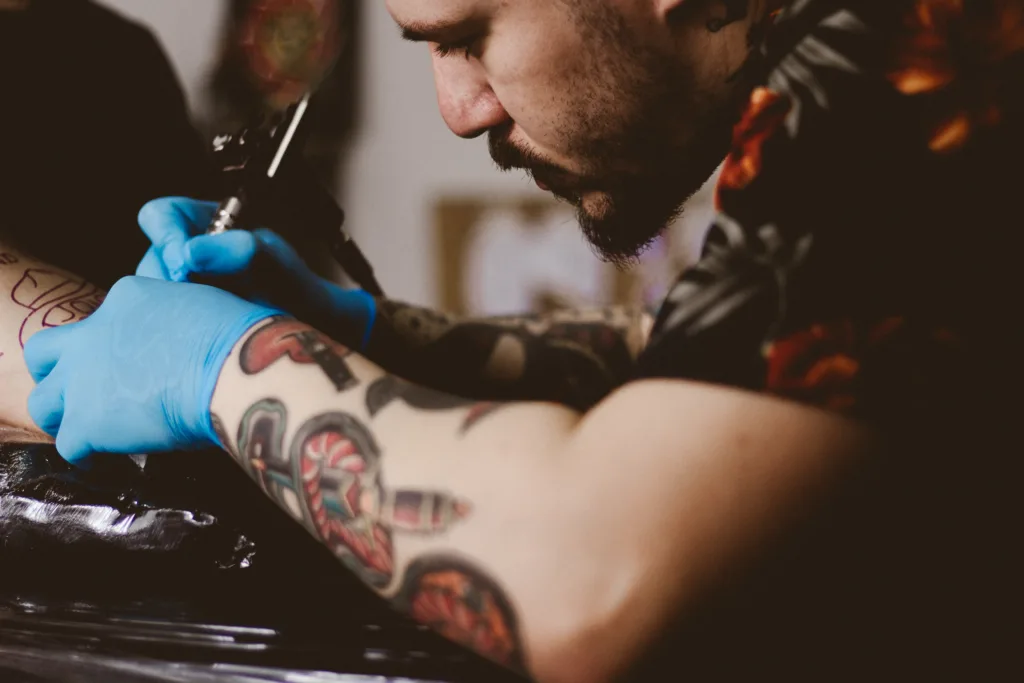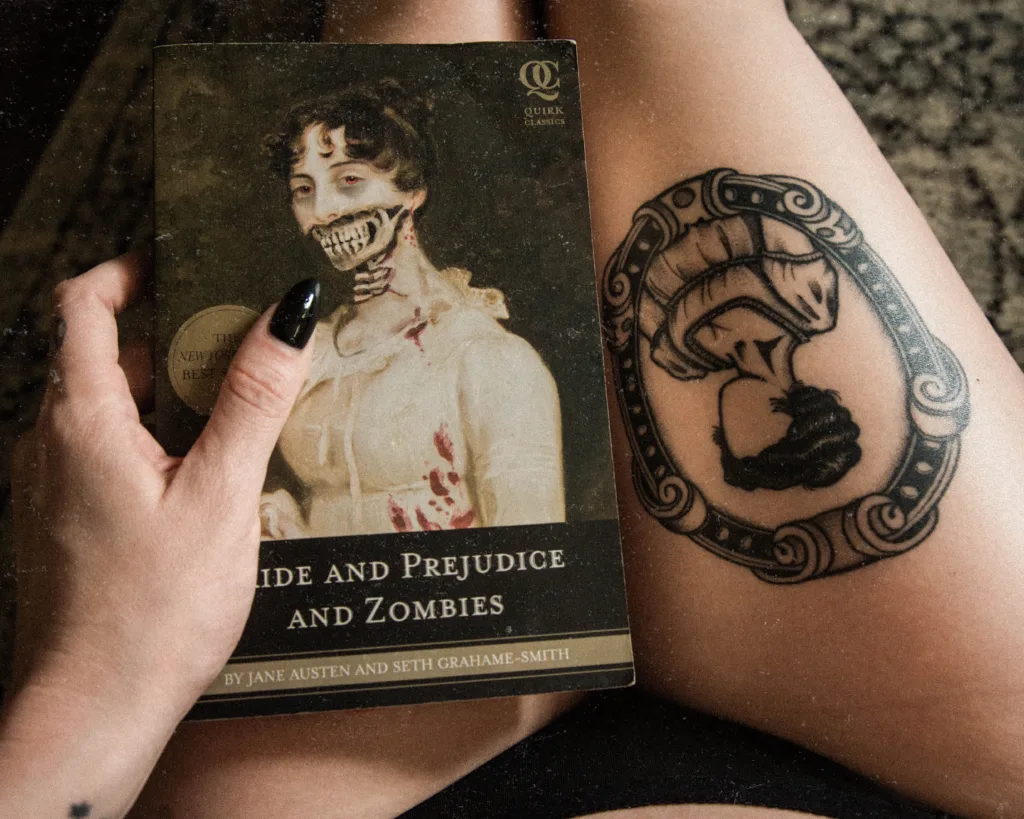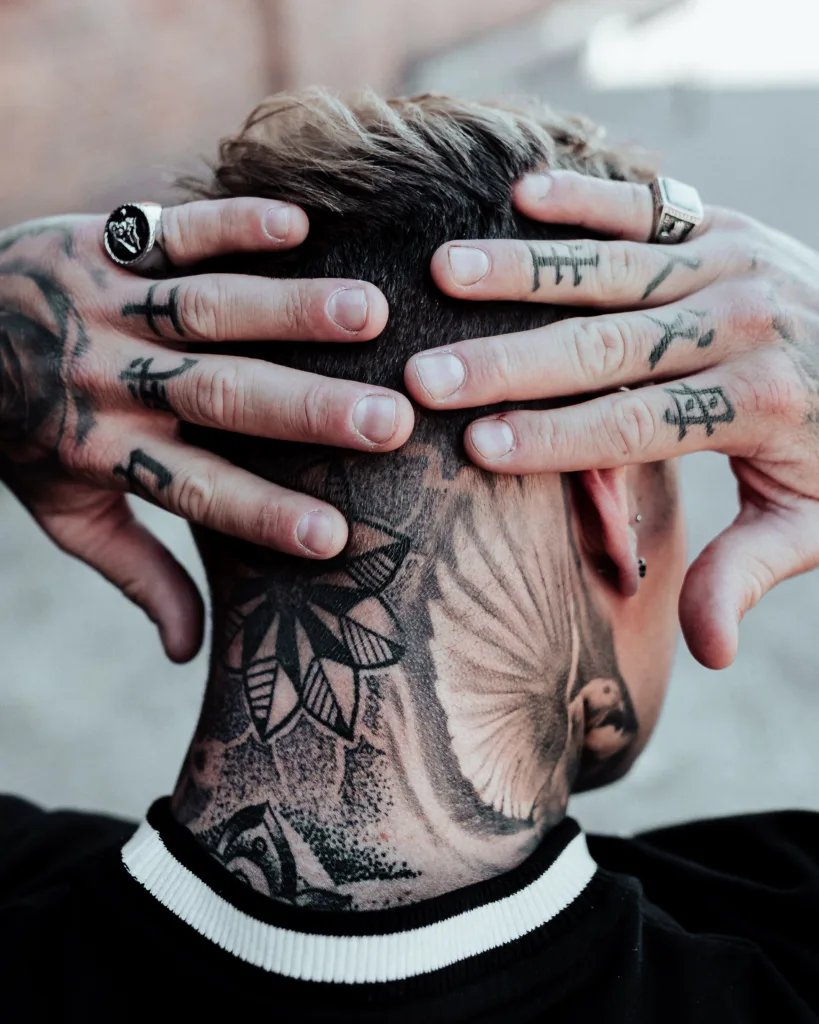Forearm tattoos have bcome increasingly popular in recent years, and for good reason – they’re easily visible, offer plenty of space for intricate designs, and are generally considered one of the least painful areas to get tattooed. However, if you’re considering a forearm tattoo and are worried about the pain level, it’s important to understand what you can expect during the tattooing process.
Firstly, it’s important to note that everyone’s pain tolerance is different, and what one person may find painful, another may not. However, there are a few general things to keep in mind when it comes to forearm tattoos and pain.
One of the reasons that forearm tattoos are considered less painful than other areas of the body is because they have fewer nerve endings than, say, the rib cage or the inside of the wrist. This means that the sensation of the needle piercing your skin will likely be less intense. Additionally, the outer forearm is generally considered less painful than the inner forearm, as the skin is thicker and there is more muscle and fat to cushion the needle.
That being said, there are still areas of the forearm that may be more painful than others. For example, the wrist and inside of the elbow are both areas where the skin is thinner and there is less cushioning. If you have a low pain tolerance, you may want to avoid these areas or opt for a smaller tattoo in those areas.
Another factor that can affect the pain level of a forearm tattoo is the size and intricacy of the design. A larger or more detailed tattoo will require the needle to be in your skin for a longer period of time, which can increase the pain. Additionally, if your tattoo artist needs to go over the same area multiple times to ensure that the ink is properly saturated, this can also increase the pain level.
Ultimately, the pain level of a forearm tattoo will vary from person to person, and there is no way to guarantee that it won’t hurt at all. However, if you choose a reputable tattoo artist and take proper care of your tattoo during the healing process, you can minimize the pain and ensure that your new ink looks great for years to come.
The Sensation of Getting a Forearm Tattoo
Forearm tattoos can feel different for everyone depending on their pain tolerance and the placement of the tattoo. Generally, getting a forearm tattoo can feel like a pricking sensation, similar to a mild sunburn. As the needle moves closer to the bone, some people may feel a painful vibration or a scratching sensation. It’s important to note that getting a tattoo can be uncomfortable, but it typically isn’t unbearable. Many people describe the pain as manageable and worth it for the end result. It’s essential to communicate with your tattoo artist if you are experiencing excessive pain or discomfort durng the process.

The Least Painful Places to Get a Tattoo
The least painful places to get a tattoo are the ones with fewer nerve endings. The outer shoulder, calf, buttocks, and outer arm are some of the areas whre people typically experience less pain during the tattooing process. These regions have a thicker layer of skin and a lesser concentration of nerve endings, making them less sensitive to the needle’s prickling sensation. However, it is worth noting that pain tolerance varies from person to person, and some individuals may still find these areas painful. Additionally, the size of the tattoo can also affect the level of discomfort, with larger tattoos generally causing more pain than smaller ones.
Is the Forearm an Ideal Location for a Tattoo?
Yes, the inner forearm is considered to be a great place for a tattoo. This is because the skin on the inner forearm is relatively smooth, has a good surface area, and is not typically exposed to a lot of sun or wear and tear, so it tends to hold ink well over time. Additionally, the forearm is one of the least painful areas to tattoo, as it has a good amount of flesh and muscle, which can help to absorb some of the pain. This makes it a popular choice for people who are gettig their first tattoo or who are looking for a relatively painless place to get inked. Overall, if you are considering a tattoo, the inner forearm is definitely worth considering as a great option.
The Most Painful Areas for Tattooing
The human body has varios areas that can be more or less painful to get a tattoo, depending on individual pain tolerance and the size and complexity of the tattoo design. However, areas that have little to no fat and are bony are generally considered the most painful. These areas include the wrist, ankles, feet, collarbone, ribs, and elbows. The reason for this is that the skin is closer to the bone in these areas, which means that the tattoo needle comes into closer contact with nerve endings and blood vessels, making the sensation more intense. Additionally, these areas may be subject to more movement and pressure, which can exacerbate the discomfort. Ultimately, the most painful area to get a tattoo will vary from person to person based on unique factors such as pain threshold and personal preference.
Preparing for a Forearm Tattoo
Preparing for a forearm tattoo requires careful planning and attention to detail. Here are some steps you can take to ensure that your tattoo session goes smoothly:
1. Get a good night’s sleep: Getting enough sleep is essential for your body to function properly, and it can also help you feel more relaxed and focused during your tattoo session.
2. Stay hydrated: Drinking plenty of water before and during your tattoo session can help keep your skin hydrated and make the tattooing process smoother.
3. Shave: If you have hair on your forearm, it’s a good idea to shave it before your tattoo session. This will help your tattoo artist see the area beter and ensure that the tattoo is applied evenly.
4. Shower: Taking a shower before your tattoo session can help you feel refreshed and clean, which is important for maintaining good hygiene during the tattooing process.
5. Moisturize your skin: Applying a moisturizing lotion to your forearm can help keep your skin soft and supple, which can make it easier for your tattoo artist to work on.
6. Eat and bring snacks: Eating a healthy meal before your tattoo session can help you feel more energized and focused. It’s also a good idea to bring some snacks with you in case you get hungry during the session.
7. Dress for your session: Wear comfortable, loose-fitting clothing that allows easy access to your forearm. Avoid tight sleeves or anything that might rub against the tattoo while it’s healing.
8. Do not show up intoxicated: It’s important to be sober and alert during your tattoo session to ensure that you can communicate clearly with your tattoo artist and that the tattoo is applied correctly.
By following these steps, you can help ensure that your forearm tattoo session goes smoothly and that you end up with a beautiful piece of body art that you can be proud of.

Time Required for a Forearm Tattoo
The length of time it takes to complete a forearm tattoo can vary depending on the size and complexity of the design. On average, a forearm tattoo that is palm-sized could take approximately one to three hours to complete. For a larger design that covers the entire forearm, it could take up to five hours or more to complete. The duration of the tattooing process can also depend on the pain tolerance of the individual, as well as the skill level of the tattoo artist. It is important to discuss the estimated time frame with the tattoo artist before starting the tattooing process to ensure that there is enouh time scheduled for the session.
Strategies for Reducing Pain During Tattooing
Getting a tattoo can be a painful experience, but there are a few thins you can do to reduce the discomfort. Firstly, it’s important to choose a licensed and experienced tattoo artist who uses proper techniques to ensure a smooth and safe process. Secondly, you may want to consider getting your tattoo on a less sensitive area of your body to minimize the pain. Thirdly, make sure you get enough rest before your appointment and avoid taking pain relievers as they can thin your blood and make you more prone to bleeding. Additionally, it’s best to avoid getting a tattoo when you’re feeling ill. Staying hydrated and eating a light meal before your appointment can also help reduce pain. Lastly, avoid consuming alcohol before your appointment as it can increase your sensitivity to pain. By following these tips, you can make your tattoo experience less painful and more enjoyable.
The Effectiveness of Numbing Cream for Tattooing
Yes, tattoo numbing creams are an effective way to reduce the pain associated with getting a tattoo. These creams contain active ingredients that work by blocking the pain signals from reaching the brain. When applied properly, they can provide a significant reduction in discomfort during the tattooing process.
It’s important to note that not all numbing creams are created equal, and some may work better than others. It’s recommended to do your research and choose a reputable brand that is specifically formulated for tattoos.
Additionally, it’s important to follow the instructions carefully when using numbing cream. Applying too much or leaving it on for too long can cuse adverse effects, such as skin irritation or allergic reactions.
Overall, tattoo numbing creams can be a safe and effective way to reduce the pain of getting a tattoo. However, it’s important to use them responsibly and consult with a healthcare professional if you have any concerns.
Should I Use Numbing Cream Before Getting a Tattoo?
Yes, you can use numbing cream before getting a tattoo. Numbing cream is a topical anesthetic that helps to alleviate the pain and discomfort associated with the tattooing process. This cream works by blocking the nerve signals that transmit pain sensations to the brain. It is especially helpful for people who have a low pain tolerance or are getting tattooed on a particuarly sensitive area of the body. To use numbing cream before a tattoo, you should apply a thick layer of the cream to the skin at least 30-40 minutes before your appointment. Then, cover the area with plastic wrap to help the cream penetrate the skin. It is important to follow the instructions provided with the numbing cream and to consult with your tattoo artist beforehand to ensure that the cream will not interfere with the tattooing process.

The Professionalism of Forearm Tattoos
It ultimately depends on the profession and workplace culture. In some industries, such as creative fields or the arts, tattoos may be more accepted and even celebrated as a form of self-expression. However, in more conservative or traditional fields such as law or finance, visible tattoos may still be considered unprofessional.
A forearm tattoo that is small, tasteful, and easily covered by clothing may be more acceptable in most workplaces. However, a large and highly visible tattoo could potentially hinder job prospects or advancement opportunities.
It’s important to consider the company’s dress code and policies regardig tattoos before getting inked. Additionally, it’s always a good idea to cover up tattoos during job interviews and to assess the workplace culture before showing off any ink.
Average Cost of a Forearm Tattoo
Forearm tattoos are a popular choice for those loking to make a statement or express their individuality. The cost of a forearm tattoo can vary depending on several factors, such as the size, design, and color. On average, a forearm tattoo can cost anywhere from $250 to $1300. If you opt for a larger and more complex design, or if you prefer a full-color tattoo, you can expect to pay on the higher end of the price range. However, if you choose a simpler design or a black and white tattoo, you may end up paying less. It’s important to keep in mind that the cost of a tattoo can also vary depending on the artist’s skill level and reputation. It’s always a good idea to do your research and find a reputable artist who can provide high-quality work within your budget.
Does Skinny Body Type Affect Tattoo Pain?
Tattoo pain levels may vary depending on different factors, including body weight. Skinny people may experience higher levels of pain during tattoo sessions compared to individuals with more body fat. This is because the bones of skinny people have less padding, making the tattoo needle come into closer contact with the bone. As a result, this can cause more discomfort during the tattoo process. Additionally, as the skin of skinny individuals is thinner, it may feel more sensitive during the tattoo process, leading to increased pain. However, it is important to note that everyone’s pain tolerance is different, and factors such as the location of the tattoo and the individual’s overll health can also affect pain levels.
The Most Painful Place to Get a Tattoo
When it comes to getting a tattoo, the level of pain can vary depending on the location of the tattoo. Some areas of the body are more sensitive than others, wich can make the experience more uncomfortable. The most painful places to get a tattoo include the ribs, spine, fingers, and shins. These areas have a high concentration of nerve endings close to the surface of the skin, making them more sensitive to the needle. On the other hand, the least painful areas to get a tattoo are the forearms, stomach, and outer thighs. These areas have thicker skin and fewer nerve endings, making the tattooing process less uncomfortable. However, it’s important to note that pain tolerance varies from person to person, and what may be painful for one person may not be for another.

How Much Should I Tip My Tattoo Artist?
When it comes to tipping a tattoo artist, the general consensus is that 20% is a good starting point. However, the actual amount you tip may vary depending on the size and complexity of the tattoo, as well as the quality of the service provided. Some people may opt to tip less for smaller tattoos, while others may choose to be more generous for larger, more intricate designs. Ultimately, the decision of how much to tip is up to the individual, but it’s always a good idea to show your appreciation for a job well done by leaving a gratuity.
Conclusion
In conclusion, getting a forearm tattoo can be a painful experience, but the level of pain varies from person to person. Some people describe it as a pricking sensation, while oters compare it to bee stings or scratching. The amount of pain also depends on the location of the tattoo on the forearm. The inner forearm tends to be less painful due to the skin’s quality, which is protected from sun exposure and aging. On the other hand, areas that are bony with little to no fat, such as the wrist and elbow, tend to be more painful. However, pain tolerance is subjective, with some people finding the experience tolerable, while others may find it unbearable. Therefore, it’s important to consider your pain threshold before getting a forearm tattoo and to communicate with your tattoo artist about any concerns you may have.
